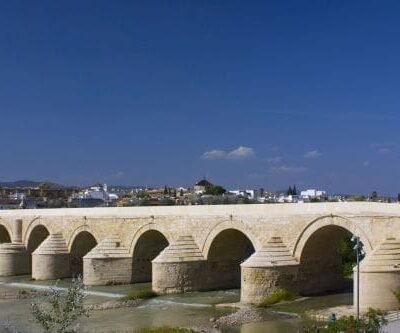A Visit to the Alcázar of Seville: Discovering a Tapestry of Cultures in One Royal Residence
Immerse yourself in the essence of Andalusian grandeur at the Alcázar of Seville, a monument to cultural legacy and architectural magnificence. As a UNESCO World Heritage Site, this regal abode offers more than mere sightseeing—it invites you on an evocative voyage through epochs, with each stone and passageway narrating the rich, layered chronicles of Spain’s diverse past.
A visit to the Alcázar of Seville offers more than just a glimpse into the past; it provides a vivid encounter with the harmonious blend of Islamic, Gothic, Renaissance, and Baroque styles—a fusion that has given rise to an artistic and architectural masterpiece.
As you plan your travel itinerary, consider how a visit to the Alcázar of Seville can enrich your understanding of Spain’s legacy. The intricate tapestry of cultures that have left their imprint on this majestic residence is evident in every detail, from the ornate tile work that adorns its walls to the whispering fountains that grace its gardens. This palace is not merely a relic to be observed but a living narrative to be experienced, making it an unmissable attraction for any traveler drawn to the art, history, and culture of Spain.
Post last updated on January 15, 2024 (originally published on December 27, 2023) by Roberta Darie.
- The Royal Legacy of the Alcázar of Seville: A Brief History
- Architectural Wonders: A Cultural Confluence
- Gardens of Serenity: The Alcázar of Seville Outdoor Retreat
- Visit the Alcázar of Seville: A Journey Through Artistic History
- Visit the Alcázar of Seville: Embracing Living History Today
- Visit Alcázar of Seville: Essential Visitor Information
- Visit Alcázar of Seville: Embracing the Timeless Allure

The Royal Legacy of the Alcázar of Seville: A Brief History
As you plan your visit to the Alcázar of Seville, you are stepping into the pages of a living history book. The origins of the Alcázar trace back to the 10th century, serving as a fortification for the Cordoban governors during the Islamic rule of Andalusia. It was a bastion of power, overlooking the fertile banks of the Guadalquivir River, and it played a pivotal role in the defense and administration of the city.

A Palace Worthy of Kings
The fort’s evolution into a royal palace marked a new era in its storied past. When the Christian monarchs took the helm, they were captivated by its beauty and strategic importance. It was under their reign, particularly during the transformative period of King Pedro I (Peter of Castile), that the Alcázar began to take on the grandeur and elegance for which it is renowned today.

The Alcázar of Seville visit: A Tapestry of Cultural Exchange
A visit to the Alcázar of Seville is incomplete without acknowledging its role as a cultural crossroad. Each ruler, whether Christian or Muslim, left an indelible mark on its architecture and ethos, creating a palimpsest of artistic and cultural influences.
The Mudéjar palaces within its walls are (perhaps) the most eloquent testimony to this blend, where Islamic artistry and Gothic sensibilities meet in a dazzling display of historical synthesis.
Architectural Wonders: A Cultural Confluence
When you visit the Alcázar of Seville, you are immediately enveloped by an architectural narrative that spans centuries. The palace stands as a testament to a historical melting pot, where each stone and archway speaks of a time when cultures converged and dialogued through art and design.

The Mudéjar Palaces: A Testament to Coexistence
The heart of the Alcázar’s charm lies in its Mudéjar palaces. This style, unique to the Iberian Peninsula, emerged as Christians employed Muslim craftsmen, resulting in an aesthetic that is both Islamic and European. As you wander through these palaces during your visit, notice the intricate plasterwork, the arabesque tiling, and the delicate wood carvings—each element a signature of Mudéjar artistry and a symbol of Seville’s layered identity.
Gothic and Renaissance Additions: Layers of History
Your journey through the Alcázar will also lead you through later historical layers, where Gothic grandeur and Renaissance refinement are etched into the palace’s expansion. These additions embody the European influences that swept through Spain, offering a contrast to the Mudéjar style and enriching the Alcázar’s architectural tapestry. The integration of these styles speaks to a period of immense cultural and artistic exchange.

The Hall of Ambassadors: The Jewel in the Crown
No visit to the Alcázar of Seville would be complete without stepping into the resplendent Hall of Ambassadors. This majestic salon, with its starry dome ceiling intended to represent the universe, served as a powerful symbol of royal authority and was a key setting for Spanish diplomacy. Its opulent design, with lavishly adorned surfaces and an imposing façade, continues to captivate visitors with its grandeur and historical significance.

Gardens of Serenity: The Alcázar of Seville Outdoor Retreat
Amidst the grandeur of the Alcázar’s palatial rooms, a visit to the Alcázar of Seville reveals an outdoor sanctuary that is as integral to the palace’s history as its stonework: the gardens. These are not just expanses of greenery, but rather carefully curated compositions that reflect the palace’s soul, with Moorish influences whispering through their layout and design.

Visit the Alcázar of Seville: Reflections at The Mercury Pond
The Mercury Pond, named for the Roman god of commerce, is a centerpiece of tranquility that has mirrored the Sevillian sky for centuries. Surrounded by lush foliage and the sound of gently cascading water, this reflective pool was once a place where royals would escape the demands of court life. Today, it offers a moment of reflection for any visitor, inviting a pause to admire its timeless beauty.

The Maze Garden: A Labyrinth of Green
As you wander through the gardens during your visit to the Alcázar of Seville, you might find yourself lost within the Maze Garden—delightfully so. This intricate network of hedges is more than a playful diversion; it is a living sculpture, a testament to the gardeners’ artistry who have shaped and maintained its paths through the ages.
The Pavilion of Charles V: Visit a Renaissance Haven at the Alcázar of Seville
Further exploration brings you to the Pavilion of Charles V, an elegant structure that exemplifies the Renaissance influence on the Alcázar. It stands as a reminder of the historical figures who have roamed these gardens and pondered within these walls. The pavilion, with its refined architectural details, provides an idyllic backdrop for visitors seeking a moment of peace away from the bustling city.

Visit the Alcázar of Seville: A Journey Through Artistic History
Embarking on a visit to the Alcázar of Seville, one is not simply walking through a historical site, but rather exploring a canvas where every inch is steeped in history. The Alcázar is not just a palace but a gallery of living art, where the walls themselves tell the tales of conquests, cultures, and coexistence.
Tilework Tapestry: A Mosaic of Stories
The vibrancy of the Alcázar’s history is perhaps best captured in its iconic tile work. These ceramic pieces are not mere decorations; they are historical documents that illustrate the confluence of cultures within Seville. As you traverse the palace, you will encounter azulejos (ceramic tiles) that display a spectrum of artistic influences, from geometric Islamic patterns to emblematic Christian symbols, each tile a testament to the city’s layered past.

Carvings in Stone and Wood: The Craftsmen’s Legacy
The meticulous carvings that adorn the Alcázar’s interiors are a testament to the master craftsmen whose hands shaped this architectural marvel. During your visit, take a moment to appreciate the intricate details in the wood and stone—each groove and whorl a silent ode to the artisans’ skills. These carvings are not just embellishments but narrators of a history where every chisel mark speaks of the palace’s evolution.
Visit the Alcázar of Seville: Tapestries that Tell Timeless Tales
As you meander through the grand halls on your visit to the Alcázar of Seville, you will be enveloped by the rich colors and complex narratives of its tapestries. These woven masterpieces hang as silent storytellers, their threads interlacing Christian and Islamic motifs in a visual representation of Seville’s complex history. They serve as a reminder of the city’s ability to blend diverse traditions into a singular, harmonious legacy.

Visit the Alcázar of Seville: Embracing Living History Today
A visit to the Alcázar of Seville is not just a step into the past; it’s an encounter with a living piece of history. As one of the oldest palaces still in use in the world today, the Alcázar continues to serve as an official residence for the Spanish royal family. It has a sense of contemporary relevance that few historical sites can claim.
The Royal Quarters: A Modern Legacy
Within the ancient walls of the Alcázar, history continues to unfold. As you explore the palace during your visit, you may tread the same paths that the Spanish royals navigate when they stay in Seville. This unique blend of daily royal duties and historical preservation makes the Alcázar a fascinating example of a heritage site that is still very much a part of present-day narratives.

Visit the Alcázar of Seville: A Cultural Stage for Events and Exhibitions
The Alcázar is not just a backdrop for royal engagements but also a vibrant cultural hub. Throughout the year, its courtyards and halls transform to host an array of cultural events, exhibitions, and performances. Visitors might find themselves enchanted by classical concerts set against the backdrop of the palace’s timeless architecture, or engrossed in exhibitions that bring global art to Seville’s historic heart.
Experiencing History Firsthand
Each visit to the Alcázar of Seville offers a chance to witness these cultural festivities, making history tangible and accessible. The palace’s commitment to showcasing diverse artistic expressions ensures that every trip can offer something new, whether it’s a flamenco performance that stirs the soul or an art exhibit that challenges the mind.
Visit Alcázar of Seville: Essential Visitor Information
Planning your visit to the Alcázar of Seville is an essential part of the journey, ensuring that your experience is as enriching as it is efficient. This section provides you with key information to navigate the practicalities of ticketing, tours, and timing, allowing you to fully immerse yourself in the splendor of the Alcázar without the hassle of unexpected inconveniences.

Ticketing Essentials
Before you embark on your visit to the Alcázar of Seville, securing your tickets is paramount. Tickets can be purchased online in advance, which is highly recommended to avoid the long queues that often form at the palace entrance. Keep an eye out for special ticket options that may include additional features such as access to temporary exhibitions or exclusive areas of the palace.
Visit the Alcázar of Seville: Guided Tours and Hidden Gems
For those eager to delve deeper into the Alcázar’s art and history, guided tours are invaluable. Local guides, well-versed in the palace’s storied past and rich artistic heritage, can enhance your visit with insights and anecdotes that you might not discover on your own. These experts bring the Alcázar’s tales to life, illuminating its walls with stories of royalty, conquests, and the confluence of cultures.
Visit Alcázar of Seville: Optimal Timing for Your Tour
The best times to visit the Alcázar of Seville are during the early morning or late afternoon. These off-peak hours are your best bet for a more serene exploration of the palace’s majesty. The soft morning light offers a gentle illumination of the intricate architecture, while the late afternoon sun bathes the palace in a warm, golden glow.
Avoiding the Crowds
To avoid the crowds, consider visiting on a weekday or outside of peak tourist seasons. Additionally, keep an eye on the cultural calendar; visiting during local events can mean increased visitor numbers. Early ticket purchase and timing your entry can contribute significantly to a more personal and intimate experience of the Alcázar.
Local Resources for Enthusiasts
For visitors who wish to gain a more profound understanding of the Alcázar significance. Local resources such as historical societies, art collectives, or cultural centers in Seville offer seminars, workshops, and additional tours that can enrich your knowledge and appreciation of this historic site.
Visit Alcázar of Seville: Embracing the Timeless Allure
In the heart of Seville lies a treasure trove of history, a place where the past is not just remembered but vividly alive. To visit the Alcázar of Seville is to walk through the annals of time, where each stone and mosaic tells a story of cultural convergence. The experience of exploring this royal palace is akin to witnessing the very tapestry of Spanish cultural history unfold before your eyes.

Visit Alcázar of Seville: A Cultural Tapestry Unraveled
The Alcázar stands as a proud sentinel at the crossroads of history, an architectural embodiment of the myriad cultures that have shaped Spain. Here, the Islamic and Christian worlds blend seamlessly, their artistic and architectural influences interwoven in a display of historical harmony. A visit to this Seville landmark offers more than just a tour; it provides an immersive education in the resilience and beauty of cultural exchange.
Savoring the Experience
As you plan your visit to the Alcázar of Seville, allow yourself the luxury of time. Rushing through its halls and gardens would only skim the surface of its profound depth. Instead, pause in its courtyards, linger by its fountains, and let the stories etched into its walls resonate with you. It’s in these moments of reflection that the Alcázar reveals its true essence—a living chronicle of Spain’s storied past. Whether you are a history buff, art enthusiast, or a traveler seeking connection with the past. A visit to the Alcázar of Seville is an experience that will leave you with a deeper understanding and appreciation for the enduring legacy of cultural fusion that defines this extraordinary place.



